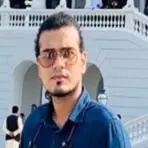Live
- SC refuses to entertain pleas seeking immediate implementation of Women Reservation Bill
- Hyderabad Police Arrest 23 in Multi-State Cybercrime Crackdown
- S. Korea confirms 2 more bird flu outbreaks, raising season's total to 23
- SpinSci Health Tech India Pvt Ltd Announces Groundbreaking News: 1,000 New AI Jobs in Telangana
- Devotees flock to temples in Nagar Kurnool district on Vaikunta Ekadashi
- Bimal Das Gupta's introduction of acrylics to India
- Written Test for Establishment of MeeSeva Center.
- Block-Level Sports Meet Organized in Nagarkurnool
- Friendly Legal Services for Child Protection
- If You Lose Your Phone, Lodge a Complaint Immediately - SP Gaikwad.
Just In
Java-style lungis see patronage declining


Competing with the makers of contemporary Indian style of lungis, the Kandagatla’s fourth generation continues to weave ‘Java’ (an island in Indonesia) style lungi, which still remains the choice mostly of Indian-Arabs in Old City.
Hyderabad: Competing with the makers of contemporary Indian style of lungis, the Kandagatla's fourth generation continues to weave 'Java' (an island in Indonesia) style lungi, which still remains the choice mostly of Indian-Arabs in Old City. Despite changing preferences and increasing imports, the family sustains the business which was started in 19th century.
Kandagatla is the oldest household producing Java lungis in the city. Even now, the family designs and produces the lungi in handloom (maggam), the latest equipment being brought in 1962. The business was started by their forefathers in the 19th century and Kandagatla Narsimhulu, the current in-charge, has been following the family tradition since 1973.
"Now-a-days when people prefer branded and designer clothes, Java Lungi is still patronised. It is mostly worn by the Muslim community and some traditional Hindus, as these lungis have varied designs from Mughal era and do not have any imprint of animal figures, one of the major reasons why Muslims use it mostly," said Kandagatla Narsimhulu of Vanavizarata Handloom Unit.
Speaking to The Hans India, Narsimhulu said that the manufacturing of traditional Java Lungi and handkerchief is their family business and they also manufacture saree when ordered. His entire family is engaged in running this unit.
Around 15 years back, Narsimhulu designed a saree which was made using 1,56,000 threads of different colours and made a record of its own. "Generally, at global level, this Java lungi is mostly designed keeping in mind the preferences of Arab style. But with onslaught of globalisation, even the local Arabs in areas like Barkas have changed their preferences and are using mostly imported material at premium prices," he added.
Narsimhulu said that the lungis produced from Kandagatla family's Vanavizarata Handloom Unit located at Gudimalkapur not only had a history of not only serving local markets but were also exported lungis to Arab countries. "With falling demand, now around 8-10 lungis are designed in the unit a day," said Narsimhulu.
Designing a Java Lungi
For designing the Java Lungi, the Viscose Yarn thread is procured from Tamil Nadu. Just like a traditional handloom woven clothing, it uses different kinds of dyes and other materials. After process, the lungi is supplied for Rs 800 each in wholesale markets.
"This manual process is good for health, as the unit has a worker named Om Namah Shiwaye, a nonagenarian who has been working in unit for more than 40 years. Besides this many a handloom and textile students visit the place and take classes for free in the unit for their projects," he added.
Family sustains with paltry income
Kandagatla Narsimhulu said that his whole family is working in the unit and the demand of the local design lungi goes down. The whole family makes around Rs 15,000 to 20,000 per month.
Narsimhulu urges that the government support the unit and provide a space to run an institute for free. In this institute, the students can learn about dyeing, designing and weaving as a vocational course for around 3 months, and later they can run their own workshop for employment and also for keeping alive the tradition.

© 2025 Hyderabad Media House Limited/The Hans India. All rights reserved. Powered by hocalwire.com






